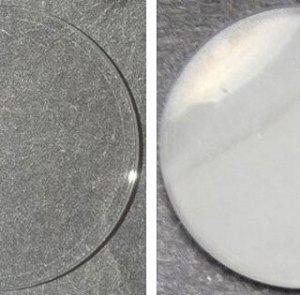
How to "cook" the cosmic atmosphere on Earth
 12. 04. 2019
12. 04. 2019

NASA's Jet Propulsion Laboratory researchers in Pasadena, California, are "cooking" the extraterrestrial atmosphere right here on Earth. In a new study, JPL scientists used a high temperature "oven" to heat a mixture of hydrogen and carbon monoxide to more than 1 ° C (100 ° F), which equals the temperature of molten lava. The aim was to simulate conditions that could be found in the atmosphere of a special kind of exoplanet (planets outside our solar system), called "hot Jupiters".
Jupiter = space giants
Hot Jupitors are gas giants orbiting, unlike the planets of our solar system, very close to their parent star. While the Earth orbits the Sun 365 days, the hot Jupitors circulate around their stars for less than 10 days. This short distance from stars means that their temperatures can reach 530 to 2 800 ° C (1 000 to 5 000 ° F) or even more. By comparison, a hot day on the surface of Mercury (which orbits the Sun in 88 days) reaches a temperature of about 430 ° C (800 ° F).
Chief Scientist JPL Murthy Gudipati, leader of the group that conducted a new study last month in the Astrophysical Journal, says:
"Exact laboratory simulation of the harsh environment of these exoplanets is not possible, but we can imitate it very closely."
The team began with a simple chemical blend of mostly hydrogen gas and 0,3 carbon monoxide gas. These molecules are very common in the universe and early solar systems, and therefore logically they could create the atmosphere of hot Jupiter. The mixture was then heated to 330 to 1 230 ° C (620 to 2 240 ° F).
Scientists have also exposed this lab blend to high doses of ultraviolet radiation - similar to what might affect the hot Jupiter orbiting its parent star. UV light has been shown to be an active ingredient. His actions have largely contributed to the surprising results of a study on chemical phenomena that can take place in hot atmospheres.
Hot Jupiter
Hot Jupiters are considered great planets and radiate more light than cooler planets. These factors have allowed astronomers to learn more about their atmosphere than most other types of exoplanets. Observations have shown that many Jupiter atmospheres are opaque at high altitudes. Although opacity can be partially justified by clouds, this theory is losing ground with decreasing pressure. Indeed, opacity has been observed where atmospheric pressure is very low.

The small sapphire disc in the right figure shows organic aerosols formed inside the high temperature furnace. Left disk not used. Image Source: NASA / JPL-Caltech
So scientists looked for another possible explanation, and one of them could be aerosols - solid particles contained in the atmosphere. However, according to JPL researchers, scientists did not know how aerosols could form in Jupiter's hot atmospheres. It was only in a new experiment that the hot chemical mixture was exposed to UV radiation.
Benjamin Fleury, researcher and lead author of JPL
“This result changes the way we interpret Jupiter's foggy, hot atmosphere. In the future we want to study the properties of these aerosols. We want to better understand how they are formed, how they absorb light and how they react to changes in the environment. All this information can help astronomers understand what they see while watching these planets. "
Water vapor found
The study also brought another surprise: chemical reactions produced considerable amounts of carbon dioxide and water. Water vapor was found in Jupiter's hot atmospheres, while scientists expected that this rare molecule would only be produced when more oxygen than carbon was present. A new study has shown that water can be formed even when carbon and oxygen are present in the same ratio. (Carbon monoxide contains one carbon atom and one oxygen atom.) While carbon dioxide (one carbon atom and two oxygen atoms) was produced without additional UV radiation, the reactions accelerated with the addition of simulated star light.
Mark Swain, an exoplanet scientist at JPL, and co-author of the study says:
“These new results are immediately applicable to the interpretation of what we see in the hot atmospheres of Jupiter. We assumed that in these atmospheres, chemical reactions were most influenced by temperature, but it now appears that the role of radiation needs to be looked at. ”
With next-generation devices such as the James Webb Space Telescope at NASA, launched for launch in 2021, scientists could create the first detailed chemical profiles of exoplanetary atmospheres. And it is possible that one of the first ones will be just those around the hot Jupiter. These studies will help scientists understand how other solar systems are shaped and how similar or different they are to ours.
For JPL researchers work has just begun. Unlike a typical furnace, it is hermetically sealed to prevent gas leakage or contamination, thus allowing scientists to control its pressure with increasing temperature. With this equipment they can now simulate exoplanetary atmospheres at even higher temperatures reaching up to 1600 ° C (3000 ° F).
Bryana Henderson, co-author of a JPL study
“It is a constant challenge to successfully design and operate this system. Most standard components, such as glass or aluminum, will melt at such high temperatures. We are constantly learning how to push boundaries and at the same time safely simulate these chemical processes in the laboratory. But in the end, the exciting results that experiments bring us are worth all the extra work and effort. ”





 6
6